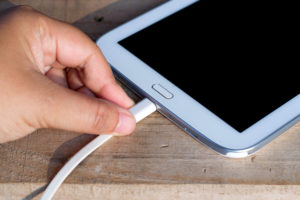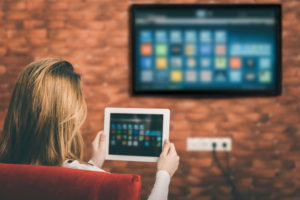There’s something to be said about how incredibly versatile tablets can be. They offer the extra screen real estate that your phone can’t provide (yet), making them great for either watching movies or boosting your productivity. It goes without saying that they have completely taken over our lives much like laptops did when they were first introduced.
But let’s say for a moment that your tablet’s display isn’t enough. Perhaps you have a big meeting coming up and you want to show what you’ve been working on with your coworkers? Maybe it serves as a second device next to your desktop computer. Either way, this may take a little education for you to make this desire into a reality. With that in mind, let’s talk about how you can make this happen!
Know Your Tablet’s Video Port
The first thing you will want to do is know what your tablet’s video port is. This is the same port that you use to charge the device, and is usually located on the bottom center of the tablet. Many newer devices such as the Galaxy Tab S3 have a USB-C port, whereas Amazon’s Fire HD 8 has a micro-B port.
 Older devices have a micro, mini, or full-size HDMI video port. If you aren’t sure which one it is, take a look at your tablet’s instruction manual or check the store page where you purchased the device to find the answer.
Older devices have a micro, mini, or full-size HDMI video port. If you aren’t sure which one it is, take a look at your tablet’s instruction manual or check the store page where you purchased the device to find the answer.
Look at the Video Input on Your External Display
Now that you know which video port you have on your tablet, now you want to know what connection you are dealing with on your external display, whether it’s a monitor, TV, or projector. Most of these screens have an HDMI, DVI, VGA, or DisplayPort video port.
In order to send video from your tablet to the external display, you’re going to need the right cable or adapter. For example, if you are using a tablet with a USB-C port on the bottom and a TV that uses HDMI, find a cable that has a USB-C connector on one end and an HDMI port on the other.
Since cables tend to be highly specific to their use-case and you may already have an HDMI cable, you may also want to consider purchasing a USB-C to HDMI adapter. You would connect the adapter to the tablet and plug the HDMI cable between the tablet and the TV. It’s important to keep in mind that only HDMI and DisplayPort support audio at this time. That means you’ll either need to find a way to connect your tablet’s headphone jack (if it has one) with a 3.5mm cable to your external display, or you’ll just need to crank the volume on your tablet. Many tablet makers (like Samsung) sell their own separate audio cables for their devices, so try there first just in case.
Wirelessly Cast Your Screen
Another option that has been growing in popularity is the ability to wirelessly cast your tablet’s screen to the external display of your choice (so long as it supports that). Tiny “dongles” like the Googles Chromecast or Amazon Fire TV Stick let you beam video through an ad-hoc network between two devices with little to no difference in quality (depending on your external display).
 These typically plug into the spare HDMI port on your display and connects through your wireless network to feed content. Since the dongle is doing all the work, you won’t have to worry about your tablet’s battery life taking a hit. Just keep in mind that at least for Android, you’ll need a phone or tablet that is running v4.4.2 or higher to support the Cast Screen feature that lets Chromecast and other Android dongles do their thing.
These typically plug into the spare HDMI port on your display and connects through your wireless network to feed content. Since the dongle is doing all the work, you won’t have to worry about your tablet’s battery life taking a hit. Just keep in mind that at least for Android, you’ll need a phone or tablet that is running v4.4.2 or higher to support the Cast Screen feature that lets Chromecast and other Android dongles do their thing.
If any of this discussion is confusing for you or you would just feel comfortable having an expert walk you through it, be sure to get in touch with one of our specialists and we can explain how to make it all work. You’ll quickly find that it’s a lot easier than you might think to hook up your tablet to an external display!
Leave a Reply